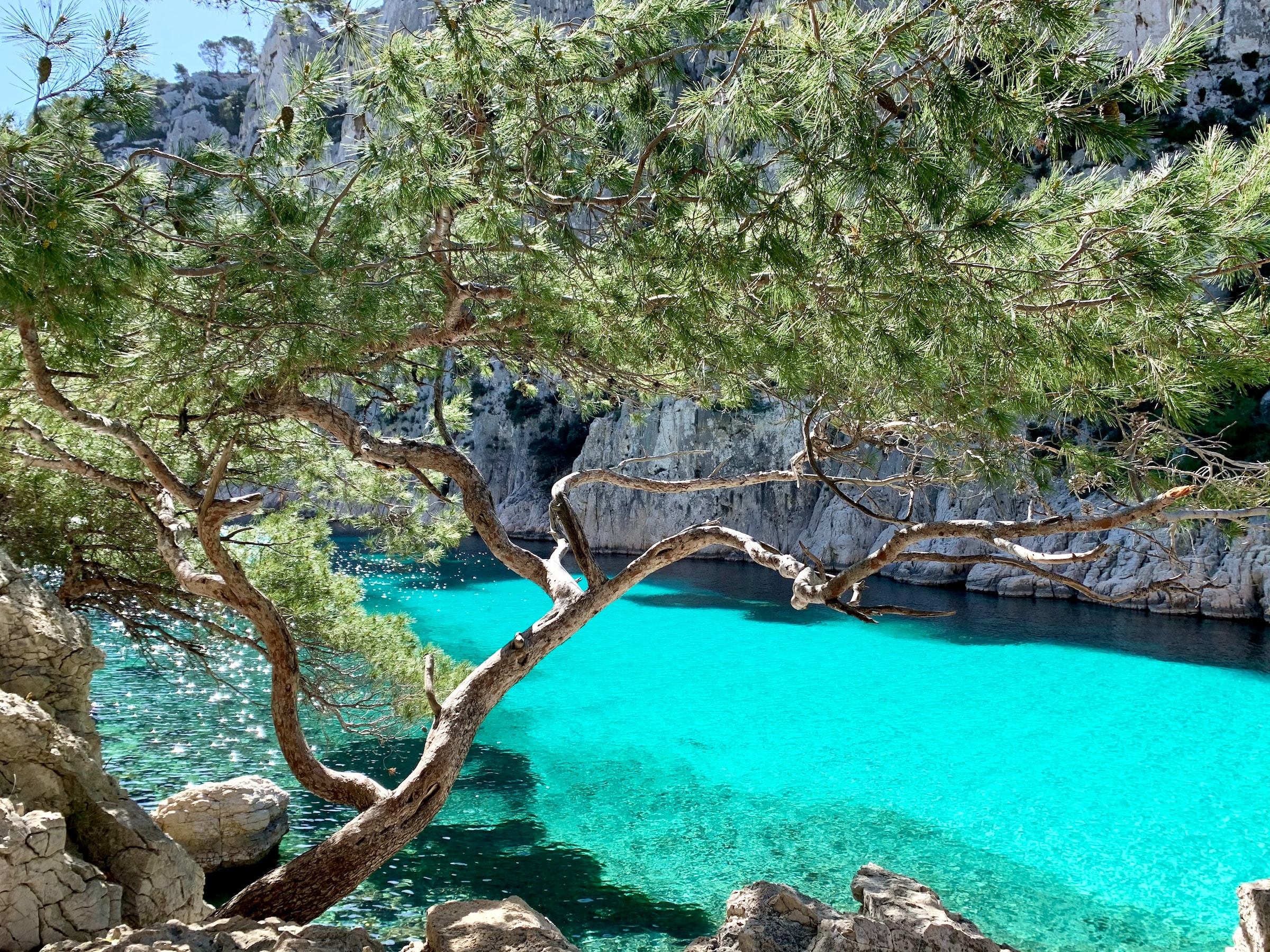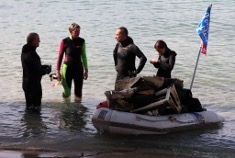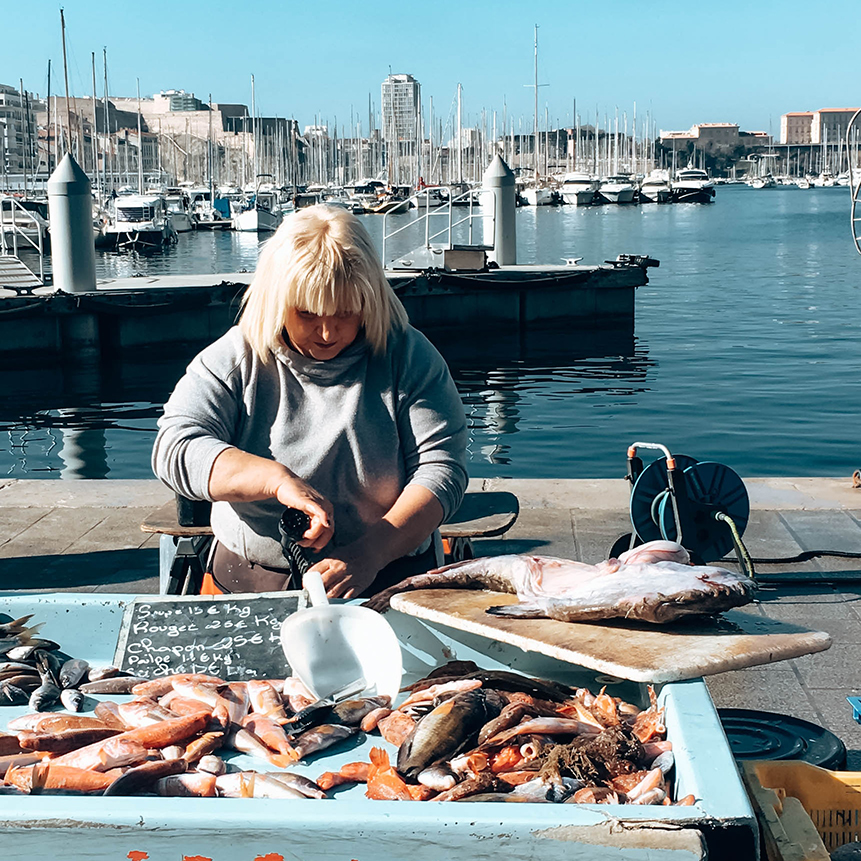It is hard to see and feel, with your own senses, the decline of Mediterranean biodiversity. But it is also a great motivation to protect what is still there, and to bring back what has been lost. Marine protected areas, and in particular strictly protected areas, have been shown to benefit both nature and small-scale coastal fisheries. We need more and better protected zones to effectively protect our oceans, argues Greens/EFA MEP Caroline Roose.
The overexploited Mediterranean Sea – can we bring back its magic?
I have always been closely connected to the Mediterranean Sea. As a child, I spent my time swimming in it and talking to the fishers in the port where my father was working. The call of the sea led me to become a sailor myself, and to marry a sailor too.
As an MEP, I still spend as much time as possible in and around the sea. During weekends, I go apnea diving. That is how I relax. It is also how I have seen, with my own eyes, the decline of marine wildlife before the coast of the Lérins Islands. Over the last decade or so, Posidonia seagrass meadows have turned brown or died off completely. In places where many yachts anchor, the seabed is barren like the moon. There are fewer octopuses and sea urchins. The grouper fish has all but disappeared, I only see one around and it is always the same. There are fewer species altogether, and much less large-sized fish.
None of that is a surprise, considering the pressures our precious Mediterranean wildlife is exposed to. The most important issues are overfishing, pollution, marine traffic, coastal development and pleasure boating. Rising water temperatures and acidity linked to climate change also play a major role. The Mediterranean is not alone in that – the Atlantic Ocean, The English Channel and North Sea are not doing much better.

There is hope: Effective marine protection works to bring back nature
My biggest pleasure is to visit places where, thanks to marine conservation efforts, the Mediterranean flourishes with life. Long-standing nature conservation areas like Cote Bleue or Cap Roux, that I have had the privilege to see as an MEP, display our Mediterranean wildlife in all its magnificent splendour. These sites are just breath-taking, and talking to those taking care of them is such an inspiration. It is encouraging to hear that France’s oldest marine reserve at Cerbère-Banyuls is soon to be massively expanded.
All these sites have in common that they include both strictly protected and less regulated areas. In the strictly protected areas, which usually cover a tiny fraction of the total area, nature is practically left to itself. Human activities that disturb marine life and habitats, like fishing, mining, mineral extraction, aquaculture or construction, are not allowed there. These places act as a refuge where species can rest, feed, grow and reproduce safely. In the remaining – much bigger – part of the protected areas harmful activities are often still allowed.
It is amazing to see how marine life, when left alone, bounces back quickly. Scientific studies confirm that both the number and abundance of species increase over time. We just need to give nature the space and time to recover, and the wonders of the Mediterranean reappear before our eyes!
Win-Win Situation: Fishers and coastal communities benefit from effective nature conservation
Perhaps more surprisingly, scientists also document that populations of popular fish species grow, to the benefit of local fishers. In strictly protected areas, also called ‘marine reserves’ or ‘no take zones’, the abundance of fish can multiply up to six times, compared to unprotected waters. Fishers benefit from the so-called ‘spillover effect’ by which fish populations that recover inside protected areas move outside these areas and into nearby fishing grounds.
In less regulated areas, certain types of fishing gear are usually prohibited. This benefits fishers using low-impact techniques, notably small-scale fishers. Small-scale fisheries play a vital role in supporting the livelihood of coastal communities and local economies. We need to do everything we can to secure their future. The establishment of marine protected areas can help to stimulate the transition towards low-impact fishing, especially when fishers are involved from the start.

At Côte Bleue and Cap Roux, fishers have been involved in the conservation efforts from the start. At the beginning, they had heated discussions. Over time, however, the benefits became obvious to all, as the abundance, diversity and size of the fish increased. What has been difficult in both areas is to find the financial resources to enforce the fishing restrictions, especially on recreational fishers.
“It’s a win-win,” Patrick Bozonnat, a former head of the local fishers’ community, or ‘prud’homme’, of Martigues, quipped when I asked him about the ‘no take zone’ at Cote Bleue. When I asked about their problems, the fishers at Cote Bleue named pleasure boating, recreational fishing and poaching – not the fact that they cannot fish wherever they want.
Christian Decugis, the prud’homme of Saint Raphael, confirms this for the ‘no take zone’ at Cap Roux, a measure installed by the professional fishers themselves to protect and enhance fish stocks. In Banyuls, where some fishers were strongly opposed to the installation of a ‘no take zone’ in the early 1970s, fishers are now asking to expand it. Soon, the area closed off to fishing will cover 16 instead of 6.5km2.
Too little too late – EU and global marine protection targets remain out of reach
Despite the conclusive evidence of benefits for biodiversity and local economies, and fishers’ positive experiences, we are still a long shot from where we need to be in terms of marine protected areas.
Globally and in the EU, our governments have pledged to protect, by 2030, 30 percent of our oceans. In the EU, we also want to place 10 percent of our waters under strict protection. These targets are based on solid science, but we are nowhere near reaching them.
The European Environmental Agency (EEA) estimates that the EU may not reach its 2030 targets. It says “the pace will have to increase by almost 30%” to achieve that. Currently, we are at 12 percent protected areas, and less than 1 percent of the EU’s seas are strictly protected.
We need real marine protection instead of paper parks
My country, France, is one of the EU’s champions in designating protected areas. Sixty percent of the Mediterranean Sea that is under French jurisdiction is covered by marine protected areas. In the remaining French waters, in the Atlantic Ocean, in the English Channel and in the North Sea, this is 40 percent. So France has already achieved the 30 percent target. But what does that mean in practice?
According to scientists, only 0.1 percent of the French Mediterranean, and less than 0.01 percent of the other waters, are strictly protected. The vast majority of marine protected areas don’t deserve the qualification ‘protected’.
France is not alone in this. Across Europe, marine protected areas are often ‘paper parks’. They are protected only on paper and biodiversity continues to be damaged, because the protective measures are insufficient. In many places, companies are still allowed to extract sand or crude oil in protected areas. Large fishing vessels can drag weighted nets across the seabed. With this technique, called “bottom trawling”, fishers catch young fish and fish belonging to sensitive species, and inflict massive harm on the seabed. That is not an exception but quite common in Europe’s marine protected areas.
So long as such activities are allowed, marine life cannot recover, and the term ‘marine protected areas’ is just greenwashing. Indeed, the International Union for Conservation of Nature (IUCN) explicitly states that industrial activity and infrastructure development (e.g. mining, industrial fishing, oil and gas extraction) are not compatible with marine protection. Existing EU law (the EU’s Habitats Directive) should prevent such abuses. But our governments choose to ignore the law, and get away with that!
In February 2023, the European Commission finally asked EU governments to phase out bottom trawling in protected areas. That is nothing but common sense, you would think. But our governments prefer to mislead fishers into thinking that all is well and nothing needs to change, even though the decline in fish populations is obvious to all.
Our oceans cannot wait – we need to act together, urgently
The European Court of Auditors has made it official: EU action has been insufficient so far to allow for the recovery of marine ecosystems and degraded habitats.
But healthy oceans are indispensable for life on Earth. We need them for many reasons, notably to be able to still catch fish in the future and to safeguard the livelihood of our fishing communities. We need them to regulate the global climate, and to be able to adapt to the effects of climate change.
It is often said that the Amazon is the lungs of the earth. It is true. But let’s not forget that the oceans are even more important for our climate. They absorb more than a quarter of all greenhouse gas emissions!
We can no longer delude ourselves about the state of our oceans. We need to act, and accompany our fishers in the transition from industrial towards low-impact fisheries that benefit both nature and local communities. We need to end overfishing and secure the future of our ecosystems and fisheries.
Without healthy ecosystems, there are no fish. And without fish, there are no fishers.
